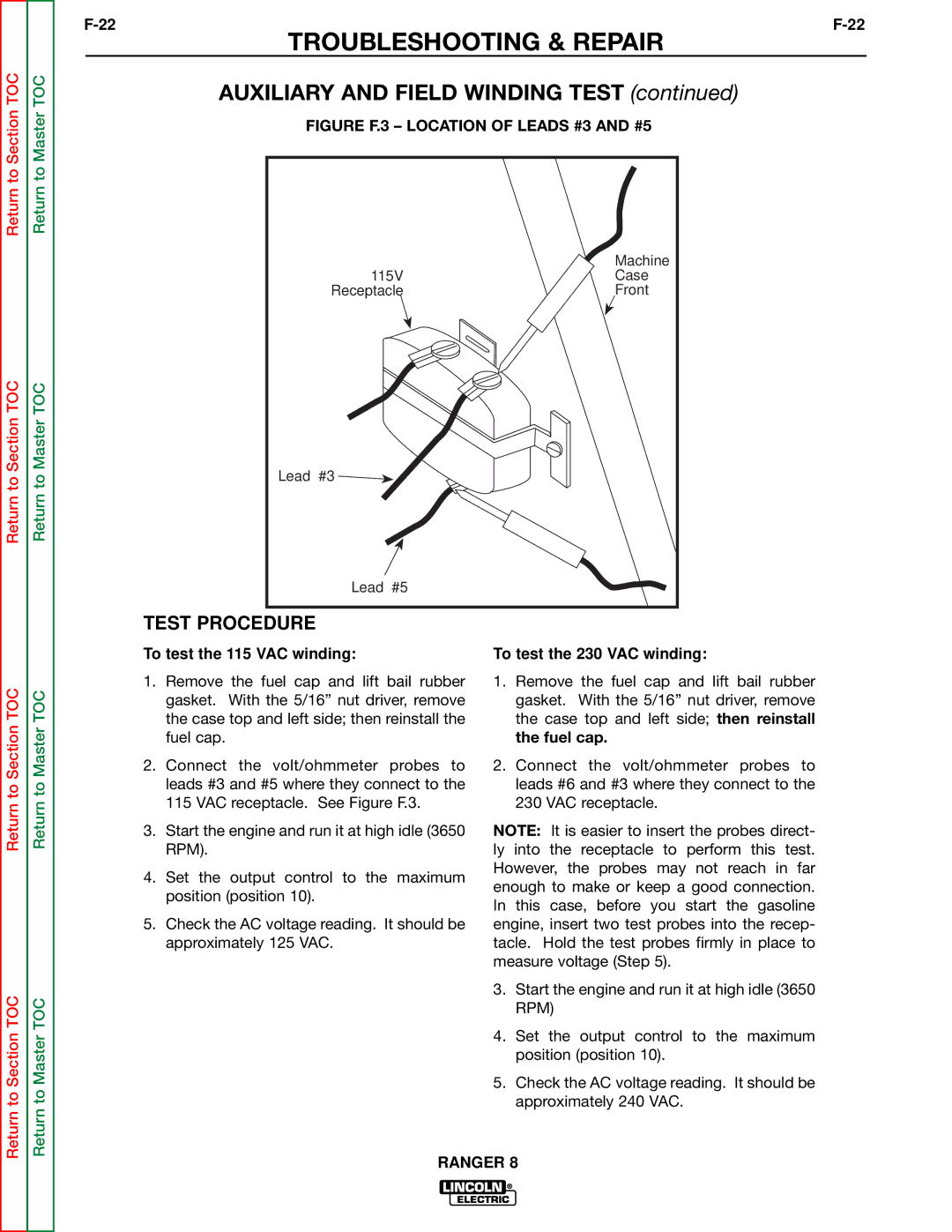
Return to Section TOC
Return to Section TOC
Return to Master TOC
Return to Master TOC
TROUBLESHOOTING & REPAIR
AUXILIARY AND FIELD WINDING TEST (continued)
FIGURE F.3 – LOCATION OF LEADS #3 AND #5
| Machine |
115V | Case |
Receptacle | Front |
Lead #3 |
|
Lead #5 |
|
Return to Section TOC
Return to Section TOC
Return to Master TOC
Return to Master TOC
TEST PROCEDURE
To test the 115 VAC winding:
1.Remove the fuel cap and lift bail rubber gasket. With the 5/16” nut driver, remove the case top and left side; then reinstall the fuel cap.
2.Connect the volt/ohmmeter probes to leads #3 and #5 where they connect to the 115 VAC receptacle. See Figure F.3.
3.Start the engine and run it at high idle (3650 RPM).
4.Set the output control to the maximum position (position 10).
5.Check the AC voltage reading. It should be approximately 125 VAC.
To test the 230 VAC winding:
1.Remove the fuel cap and lift bail rubber gasket. With the 5/16” nut driver, remove the case top and left side; then reinstall the fuel cap.
2.Connect the volt/ohmmeter probes to leads #6 and #3 where they connect to the 230 VAC receptacle.
NOTE: It is easier to insert the probes direct- ly into the receptacle to perform this test. However, the probes may not reach in far enough to make or keep a good connection. In this case, before you start the gasoline engine, insert two test probes into the recep- tacle. Hold the test probes firmly in place to measure voltage (Step 5).
3.Start the engine and run it at high idle (3650 RPM)
4.Set the output control to the maximum position (position 10).
5.Check the AC voltage reading. It should be approximately 240 VAC.
